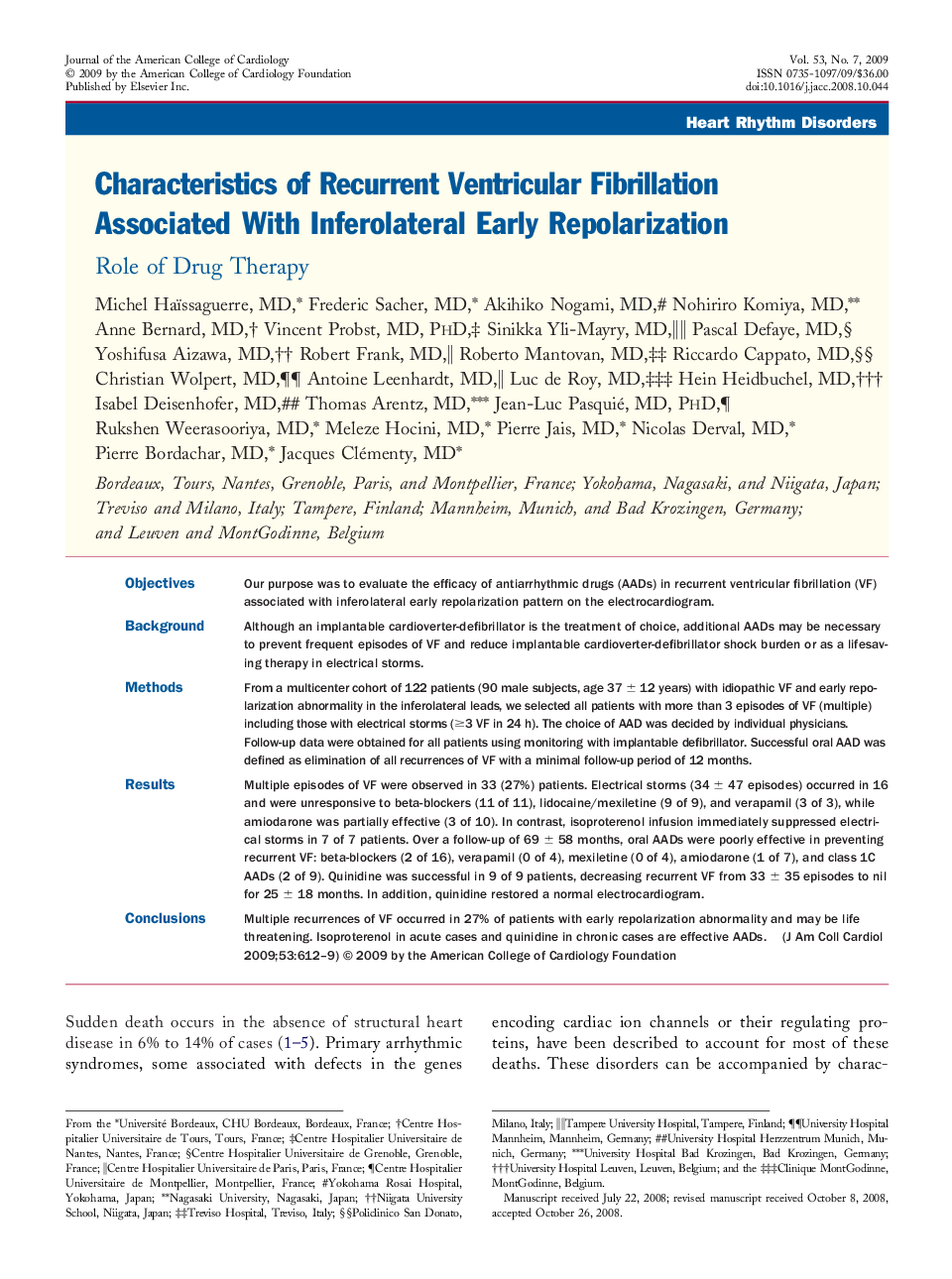| Article ID | Journal | Published Year | Pages | File Type |
|---|---|---|---|---|
| 2951232 | Journal of the American College of Cardiology | 2009 | 8 Pages |
ObjectivesOur purpose was to evaluate the efficacy of antiarrhythmic drugs (AADs) in recurrent ventricular fibrillation (VF) associated with inferolateral early repolarization pattern on the electrocardiogram.BackgroundAlthough an implantable cardioverter-defibrillator is the treatment of choice, additional AADs may be necessary to prevent frequent episodes of VF and reduce implantable cardioverter-defibrillator shock burden or as a lifesaving therapy in electrical storms.MethodsFrom a multicenter cohort of 122 patients (90 male subjects, age 37 ± 12 years) with idiopathic VF and early repolarization abnormality in the inferolateral leads, we selected all patients with more than 3 episodes of VF (multiple) including those with electrical storms (≥3 VF in 24 h). The choice of AAD was decided by individual physicians. Follow-up data were obtained for all patients using monitoring with implantable defibrillator. Successful oral AAD was defined as elimination of all recurrences of VF with a minimal follow-up period of 12 months.ResultsMultiple episodes of VF were observed in 33 (27%) patients. Electrical storms (34 ± 47 episodes) occurred in 16 and were unresponsive to beta-blockers (11 of 11), lidocaine/mexiletine (9 of 9), and verapamil (3 of 3), while amiodarone was partially effective (3 of 10). In contrast, isoproterenol infusion immediately suppressed electrical storms in 7 of 7 patients. Over a follow-up of 69 ± 58 months, oral AADs were poorly effective in preventing recurrent VF: beta-blockers (2 of 16), verapamil (0 of 4), mexiletine (0 of 4), amiodarone (1 of 7), and class 1C AADs (2 of 9). Quinidine was successful in 9 of 9 patients, decreasing recurrent VF from 33 ± 35 episodes to nil for 25 ± 18 months. In addition, quinidine restored a normal electrocardiogram.ConclusionsMultiple recurrences of VF occurred in 27% of patients with early repolarization abnormality and may be life threatening. Isoproterenol in acute cases and quinidine in chronic cases are effective AADs.
